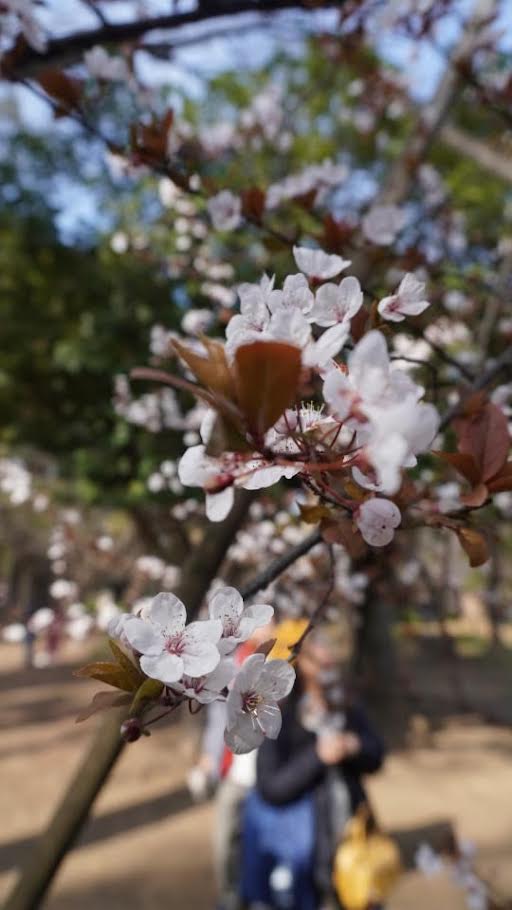Etiquette for travelers
A glimpse into the prefecture's cultural heritage and natural beauty

to bloom, leading to the rising number of
tourists
It seems everyone is currently in Japan for Holy Week and the highly-anticipated season for cherry blossoms. Originally set to be in full bloom this week, the new forecast indicates a week’s delay due to the sudden temperature drop last week. In Shibuya and some of the more popular tourist areas, almost every third person I encounter is speaking Tagalog that I find myself unwittingly eavesdropping on loud conversations.
“Itong Ueno, hindi gaanong maraming Filipino pumupunta dito, ano? [Not a lot of Filipinos go to Ueno, right?]” I heard a man say as my husband and I walked past him. Well, he was wrong, as I counted at least five families wandering around the park and inside the Tokyo National Museum.
With our diaspora, the sheer number of people traveling this season, and the impressive embassy translators who speak fluent Tagalog walking around Tokyo, I’d think twice about saying things out loud. Trust me, there’s someone who will understand you in the crowd. While we’re on the topic of loud conversations, I notice another trend among tourists—loud and disruptive behavior. It’s essential to remember that when we travel, we represent not just ourselves but also our country and culture. Therefore, practicing good etiquette is crucial to ensure a positive experience for everyone.
Getting excited and caught up in the moment is understandable, especially when exploring new places. Being mindful of your surroundings, as well as keeping your voice at a reasonable volume, however, is respectful to those around you. Avoid loud conversations, especially in quiet or crowded areas like museums, temples, or public transportation. Refrain from taking calls on the train or the bus.
Respecting local customs and traditions is key. Take the time to research (Google is your friend) and understand the cultural norms of the country you’re visiting—not just in Japan. This includes dress codes, greetings, and behavior in public spaces. By respecting local customs, you avoid unintentionally causing offense and demonstrate appreciation for the host culture.
Another aspect of traveler’s etiquette is cleanliness and environmental awareness. Many popular tourist destinations, including cherry blossom viewing spots, parks, and temples, rely on visitors to maintain cleanliness. Make sure to dispose of trash properly. There aren’t a lot of public bins, and the Japanese usually take their trash home. If you find bins in public, make sure to follow the segregation rules. Follow designated paths to avoid messing with the flow of people, and refrain from touching or damaging delicate natural or historical sites.
Furthermore, patience and courtesy go a long way in ensuring a pleasant travel experience for everyone. This includes being considerate of others in crowded places, calmly waiting your turn in lines, and refraining from pushing or shoving. Remember, we all share the same space, so treating others with kindness and respect creates a more harmonious environment.
Lastly, embracing the spirit of cultural exchange can enrich your travel experience. Take the opportunity to engage with locals, learn about their customs and traditions, and share your own culture in return. Whether trying local cuisine, participating in cultural activities, or simply striking up a conversation, building connections with people from different backgrounds can lead to meaningful and memorable experiences.
In essence, practicing good traveler’s etiquette is not just about following rules. It’s about showing respect, consideration, and appreciation for the places we visit and the people we encounter along the way.

PH products: A hit at the ALFS Bazaar in Tokyo
The Asia-Pacific Ladies Friendship Society (ALFS) Bazaar in Tokyo proved to be a vibrant showcase of culture, community, and cuisine. Held on March 26, the annual event put Philippine products in the spotlight, giving them their well-deserved attention. At the Philippine Embassy’s stall, visitors were treated to an array of Philippine handicrafts and snacks, each offering a taste of the country’s rich cultural and culinary heritage. From banana chips and dried mangoes to flavorful calamansi and mango juices, the Philippine products quickly became a hit among attendees, drawing praise for their quality and authenticity.
The embassy’s participation in the ALFS Bazaar reflects its commitment to promoting Philippine culture and fostering meaningful connections with the international community. Through initiatives like this, the embassy aims to showcase the best of Philippine craftsmanship and cuisine while supporting important causes that benefit communities across the Asia-Pacific region.
The proceeds from the ALFS Bazaar in Tokyo will go toward supporting welfare, education, and natural disaster relief efforts in the participating countries of the Asia-Pacific region. By contributing to these important causes, attendees enjoyed a day of cultural immersion and shopping while making a meaningful difference in the lives of communities in need. From funding educational initiatives to assisting those affected by natural disasters, every purchase at the bazaar helped to support vital programs and services across the region. Visitors demonstrated the power of solidarity and compassion through their generosity, embodying the spirit of international cooperation and goodwill.
This year’s ALFS Bazaar featured a diverse range of embassy stalls, each offering unique products and experiences from their respective countries. From Australia to Sri Lanka, participating nations came together to share their traditions, talents, and treasures with visitors.
In addition to the embassy stalls, Nagano Prefecture’s booth invited visitors to explore its picturesque landscapes, indigenous goods, and tourist attractions. The Japan booth, focusing on promoting local craftsmanship and tourism, offered a glimpse into the prefecture’s cultural heritage and natural beauty, enticing visitors to discover its hidden gems.